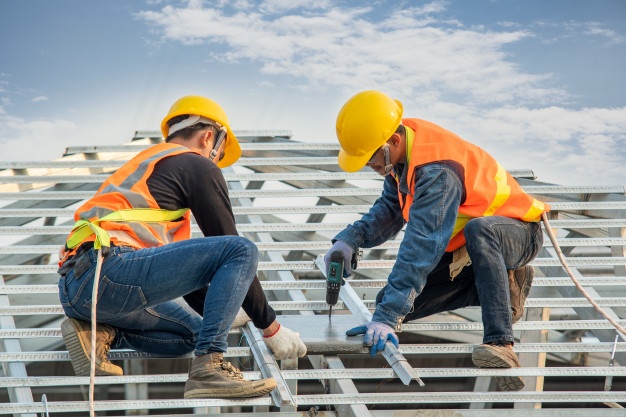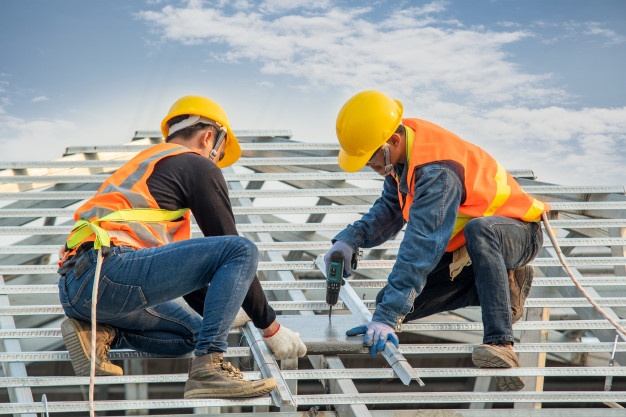Nouvelles
2021-09-17
Alone and at-risk: How construction companies can protect lone workers

Alone and at-risk: How construction companies can protect lone workers
Construction workers are no strangers to health and safety procedures – working in an industry with so many potential risks means they are usually well-versed in how to keep themselves safe. But now that more construction workers are likely to be working alone, employers must ensure that they’re taking additional measures to protect their workers and meet their duty of care obligations – and workers need to be aware of how they can avoid the additional risks lone working can present. That’s according to Peoplesafe CEO, Naz Dossa.
Naz DossaAs construction projects get moving again and workers get back on site, employers will have plenty to think about when it comes to health and safety. The risk of spreading the coronavirus can be added to the long list of risks construction workers face every day, from slips and trips to operating heavy machinery. And the government guidelines for keeping construction workers safe from COVID-19 will vary from worker to worker – a plasterer that’s working indoors will need to abide by different rules to a labourer that’s laying a road, for example.
But while many employers are focusing on implementing new measures to keep their employees safe, they must consider how the changes they make to reduce the risk of COVID-19 could expose workers to new risks. The government advice for construction companies to keep workers at least 1m apart, stagger workers’ shifts and reduce the number of different people that each individual is exposed to is likely to lead to fewer people on site, and more people working alone. Lone workers are inherently exposed to greater risk than those working alongside others – and so it’s vital that employers understand and mitigate this risk to keep their lone workers safe.
Why are lone workers at greater risk?
When a construction worker is working alone, they’re facing an increased level of risk for a number of reasons. They’re often required to make ‘on the spot’ safety decisions, but with many facing new ways of working and still adjusting to new health and safety protocols, it could be difficult for lone workers to determine the best way to keep themselves safe. Many will be working alone for the first time, and without colleagues around them to consult for advice, they may inadvertently put themselves at greater risk of illness or injury.
If a lone worker does have an accident or injure themselves, it’s less likely that there will be another person around to assist them – and if they don’t receive help in a timely manner, serious injuries could become fatal. Interim RIDDOR data for 2019/20 shows that 40 construction workers have suffered fatal workplace accidents – a worrying increase from the 31 workplace fatalities among construction workers in 2018/19, and the highest number of fatalities of any industry this year. While RIDDOR does not detail whether or not these workers were working alone, the increase in fatalities despite many projects being put on hold due to the coronavirus crisis could suggest that those that were working were at greater risk.
How can construction companies protect their lone workers?
ARC_2While there are no specific health and safety regulations relating to lone workers, the HSE does mandate that employers have a clear duty of care towards their employees. This means that whenever workers are carrying out tasks alone, employers will need to put extra measures in place to ensure they’re meeting their legal obligations under health and safety regulations such as the Health and Safety at Work Act.
Employers have a duty to include risks to lone workers in their general risk assessments, although many construction companies will already be carrying out fresh risk assessments due to COVID-19. They should revisit and refresh their lone worker risk assessments at the same time, because the measures they put in place to stop the spread of COVID-19 may impact the working environment for lone workers. An updated risk assessment may flag new risks to lone workers that require mitigation, such as working out of sight or earshot of others. This assessment – and action taken to address any identified issues – may also be required when submitting information on company policies and procedures in proposals and procurement questionnaires.
Organisations must mitigate against any risks they identify in their risk assessments before any workers start working alone. While every lone worker will face unique risks, depending on the work they’re doing and the environment they’re working within, the HSE does provide some general guidance on how to protect lone workers. It advises employers to ‘train, supervise and monitor’ lone workers and ‘keep in touch with them and respond to any incident’. Within the construction industry, many businesses put this advice into practice by providing those that are working alone with a lone worker safety device or app that can alert others when lone workers are in potentially risky situations.
However, while lone worker solutions can be incredibly effective in protecting people that are working alone, safety-conscious employers should explore all of the options that are available to them to find a solution that will provide the best protection for their workers. Not all solutions are equal, so there are certain features employers should look out for. Features like fall detection (which sends out an automatic alert when the device is immobilised for a certain period of time), a direct link to a dedicated 24/7 Alarm Receiving Centre manned by specialists and the ability to pinpoint the device’s exact location can make a real difference to a lone workers’ safety. Those who are working in a hazardous environment may also need a device that is ATEX-rated, as standard devices can create sparks that could catch fire in high-risk areas.
How can lone workers protect themselves?
While employers can and should put extensive policies and processes in place to ensure their workers’ health and safety, workers that are working alone must also be prepared to advocate for their own safety whenever they feel it’s necessary to do so. Even the most detailed risk assessments could miss some potential hazards, particularly as working environments are constantly changing due to COVID-19. So if a construction worker identifies a risk that they don’t feel they have adequate protection against, then they should flag it to their employer immediately.
Of course, this can be difficult when working alone – which is another reason why lone worker safety devices can be so useful. Many devices have a two-way audio communication function, which will enable workers to contact their supervisors or other team members whenever they need to. Employers should encourage workers to ask for any additional equipment they need to be able to work safely, such as PPE, or to contact a colleague if they need help in making a safety decision.
So while lone working may carry greater risk, there are plenty of steps that construction employers and employees can take to ensure those working alone stay safe and healthy. This may require some investment from employers in measures such as PPE and lone worker devices, but those operating within the construction industry should see this as an investment in their employees’ physical and mental health, rather than a cost. And it’s an investment that’s sure to pay off, as those with a stellar safety record will be best placed to ‘build back better’ and secure valuable contracts going forward.

